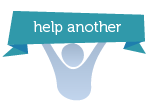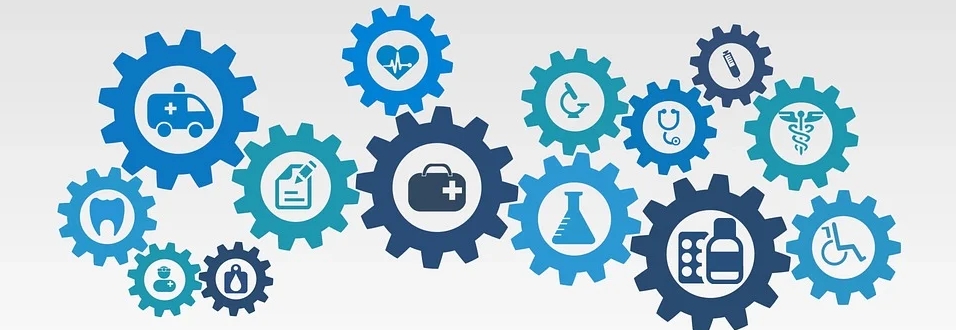So, the situation has escalated quite a bit over the past few weeks. Not just in Europe and Asia, but all over the world rules are implemented restricting people to go out, socialise etcetera. I, being a social little beast (which is a very strange translation of the Dutch expression "sociaal beestje"), needed to find some ways to adjust to the whole situation. But I have, and even though I miss my friends and family, staying indoors and in quarantine is much more important to me. So I thought I'd share my tips with you, to help you get through this time as well!
1. Learn to enjoy doing nothing
Nowadays we often have busy schedules; work, seeing friends, working out, trying new things, watching all series on Netflix, etc. I always feel like I have to try and do everything, and that if I spend a day doing nothing, I have wasted that day. This is something that really bothers me and I do not know why I feel like I must do something all the time. This quaranty time has really changed that. Now that I basically CANNOT do anything, it really has brought some breathing space into my life. This is also what I try to remind myself of, as to not become too negative. If there is one positive side to this whole situation, it is that I get the chance to reset my brain, to rediscover myself and my creativity and to rethink my life choices. That also brings me to my second tip:
2. Discover your creativity
While I do not have a lot of free time, in the time that I have I try to find creative things to do and I really enjoy it. For example, I still had a lot of seeds that I planted in my garden, I picked up my tin flute again, my mum gave me a drawing book etc. One of the most important things in these times is to stay active and to keep stimulating your brain. Actually, challenging yourself is one of the best things to do! It also gives a rewarding feeling afterwards. Do not forget that there are a lot of things you can do without going outside. Make the most out of your time and try the things you have always wanted to do. Even on a low budget there is a lot you can do; buy things on second hand websites, facebook pages, look for things you can make yourself on Youtube, try to make fermented food, get a chess app to practice playing chess, etcetera!
3. Sports, sports, sports
Whatever you do, avoind becoming inactive! Stimulating your body by doing sports activates your immune system and helps you in fighting off diseases. Even if you are not a sports lover, there is still a lot you can do. There are so many fun, weird, exhausting Youtube videos for every level of sports. Give yoga a try, or karate training, or even a lindyhop dance class for example. If it is allowed and you are disciplined enough to abide by the rules, you can of course go for a run, bike-ride, rollerskating round, but always maintain enough distance from others and avoid busy areas.
4. Contact your friends
Staying in touch with your friends and family is both important for you and for them! I actually feel like my relationship with my parents has become better over the past weeks since we have more time to call each other, message each other and send each other funny videos. With my friends I sometimes video call, but I also recently started a groupchat to find games to play together. On my birthday two days ago we already tried playing "The Jackbox" through screen sharing on Google Hangouts, and soon we will try "Who am I", but there are many other games you can play online together!
5. Set a daily target
It might feel useless to be at home all the time, but it does not have to be! So set yourself a daily target! Targets can be anything; cooking a fresh meal, trying a new hobby, getting yourself out of bed, NOT watching Netflix all day. Try to find targets that are realistic and good for you. If you never work out for example, you do not have to set a target to suddenly work out for 1 hour a day, but you can also be proud of yourself if you only do five minutes of yoga! You can increase this target every day, find new targets, set more targets, play with this idea as you like!
6. Stick to a healthy routine
Try to stick to a healthy routine. This is very important to keep you active, healthy and happy! Get out of bed in the morning, make your bed, open the curtains, brush your teeth, eat breakfast (or the other way around), start working, hobbying, sports, whatever, go to bed and get enough sleep. Doing this will ensure you do not screw up your biological clock and it might actually feel quite rewarding as well!
7. Focus on the positive things and do not focus on the news too much
The first weeks of quarantine I was addicted to checking the news. I watched everything on the news channels, listened to the news radio and checked the news app 10 times a day. This drained me, I felt all my positivity fly away with every news item I read. So I quit. Not entirely, but I dosed my news consumption to only around dinner times and to government briefings. Of course, I still worry about the people that work hard, and the people that are in a really tough situation, and I follow our government's rules, but I realised that becoming depressed myself was not helping anyone. So stay up-to-date, do what you can, care for other, but do not let yourself drown in negative news. Another way to avoid this is to find positive news. While the situation is currently super bad, and it might be hard to find positive things to focus on, it is still possible; better air quality, time to rethink your life, fewer deaths than yesterday (instead of "the total death toll has risen") and so on.
8. Create a nice working environment
If you have to work from home, make a nice area for yourself where you can totally focus on work and where other things do not distract you. Work from a desktop or laptop with keyboard and mouse, put a nice plant on the table, a bottle of water and you can start working! Do not forget to take regular breaks though. For me a schedule helps to have things to look forward to. For example, after two hours of working, I have 10 minutes to check my phone and play wordfeud, after another 1,5 hours I have 30 minutes to have lunch, after another two hours I water my plants and sit in the garden for 5 minutes, one more hour of work and I can play wordfeud again and another hour of work and my working day has already finished! I also try to start early (8 o'clock) so that I have enough time in the afternoon to do fun stuff at home.
9. Be honest about your feelings
Getting things off your chest is so important in these crazy times. Hardly anyone from our generation has experiences something like this, or knows how to deal with it. This can be super stressful, scary and lonely. It is important to talk to your friends about this. Let them know you feel alone, or feel stressed. Let them know you need someone you can call sometimes to talk about this, or to simply feel like you are still connected to other people. This is not strange, it is very normal and I can assure you, many people feel like this. If you have good friends they will understand you and probably love to help you out and call you a bit more.
10. Eat healthy
This is always important, but especially when you are less outside, less active and your daily schedule is messed up or does not exist. Stick to a healthy, varied diet, take extra vitamins if needed, drink enough water throughout the day and so on.
11. If you have depressed friends, call them
This last tip is a bit different from the other ones, it is a call for action. There are many depressed people in the world, and from my own experience I can say that even in normal times, this is a horrible feeling. Being depressed in times like this... well it only intensifies the feelings depressed people already had. It is therefore very important to stay in touch with them, help them, listen to them, motivate them. Really, I can assure you that it already helps so much when someones lets you know they think of you or that they wonder how you are doing. So maybe spend a bit more time on these friends, to make sure they are okay :).
Well, hopefully this helps in getting you through these difficult times. If you have any tips to add, please let me know in the comments. Remember, stay healthy, follow the rules and keep an eye on the vulnerable.
 Summaries: home page for medicine and healthcare
Summaries: home page for medicine and healthcare Summaries: the best textbooks for medicine and health care summarized
Summaries: the best textbooks for medicine and health care summarized Summaries: the best definitions, descriptions and lists of terms for medicine and health care
Summaries: the best definitions, descriptions and lists of terms for medicine and health care Activities abroad and working together: home bundle for medicine and health care
Activities abroad and working together: home bundle for medicine and health care Geneeskunde en gezondheidszorg: basisbundel
Geneeskunde en gezondheidszorg: basisbundel Themes: home bundles per study and working fields
Themes: home bundles per study and working fields
































